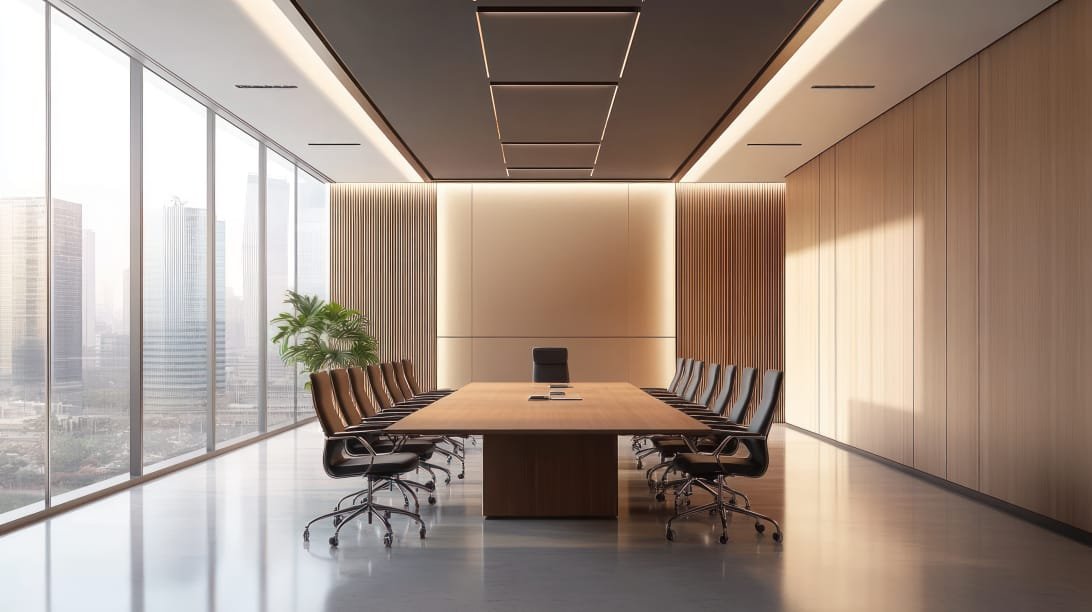From size and shape to appearance and everything in between, there is a lot to consider when purchasing a suitable conference table for your organization. And while these elements are important, there’s a deeper layer of functionality and design that separates an average table from one that truly enhances collaboration, comfort, and productivity. Here are some features you probably didn’t know make a great conference table and why they matter more than you think.
Microphone and Acoustic Integration
If you’ve ever been in a video call where half the participants are barely audible, you’ll understand why acoustics matter. A truly excellent conference table subtly supports sound quality. High-end models sometimes include integrated microphone ports or materials designed to reduce sound reflection, especially on glossy surfaces that bounce sound awkwardly. The underside of the table may even be textured or treated to absorb echoes, improving audio for in-person and remote participants alike.
Tapered Edges for Visibility and Comfort
A feature often overlooked is edge tapering. Tables that slightly angle their edges inward toward the base (not just aesthetically but practically) give everyone better sight lines. This means people at opposite ends can actually see and speak to each other without leaning. It also improves the viewing angle for shared screens, whiteboards, or presenters. And yes, your arms will thank you; the edges are surprisingly more comfortable for long elbow rests.
Cable Management That Actually Works
Basic conference tables might offer a grommet hole or two but great ones go further. We’re talking about channel-based cable routing systems hidden within the table’s structure, magnetic access panels, or even built-in retractable charging docks. The goal? No messy cables draping onto the floor, and no hunting for an outlet mid-meeting. Clean, functional cable management isn’t just a bonus; it maintains professionalism and reduces tripping hazards.
Integrated Power That’s Adaptable
Sure, most tables now have built-in power outlets, but the better versions anticipate tech evolution. Some feature modular or swappable power modules so that your table doesn’t become outdated as USB-A becomes obsolete and USB-C or wireless charging takes over. Some even include HDMI pass-throughs or network jacks embedded directly in the tabletop, reducing reliance on dongles and adapters.
Mobility Without Compromise
You might assume that a conference table should be stationary. But what if it didn’t have to be? High-end modular designs now offer lockable casters and hidden wheels, allowing teams to reconfigure the space as needed, without sacrificing aesthetics or stability. This is especially important in hybrid offices where flexibility is key.
Surface Materials That Withstand Real Use
Most people look at a conference table’s surface and think: wood, laminate, or glass. But deeper considerations include anti-glare coatings, fingerprint-resistant finishes, and heat tolerance (for those who rest their coffee cups directly on the surface). These materials preserve aesthetics for years without fuss.
Multi-Zone Seating Considerations
Not all chairs around the table are equal unless the table is designed that way. Subtly angled legs or offset bases can prevent people from awkwardly bumping into supports or feeling boxed in. Advanced designs consider legroom at every position, not just the ends or sides. A small touch, but one that significantly improves meeting comfort, especially during long sessions.
As you can see, a great conference table isn’t just about how it looks or how many people it accommodates. It’s also about those hidden layers of design, technology, and ergonomics that create a seamless, productive experience. Whether you’re planning to invest in a new piece or upgrading an existing setup, keep an eye out for these lesser-known yet crucial features.
READ ALSO: How to Build a Sink Vanity Out of Wood











